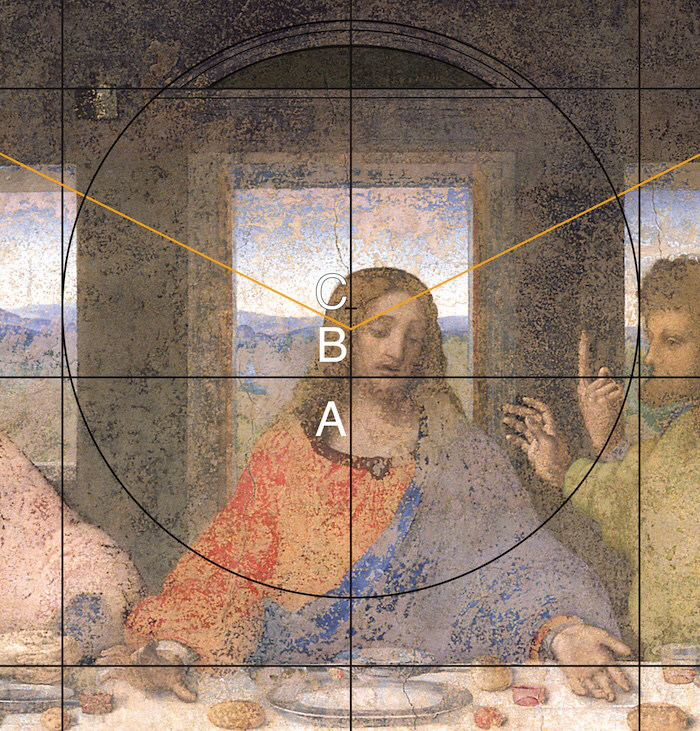Three Centres for The Last Supper?

Three centres for The Last Supper?
With the presentation of Brachert’s grid in the last mini-series, things seem at first to get a little out of hand.
📐 In effect, the composition has three different centres:
A – The centre of the grid itself.
B – The 'vanishing point of the perspective, situated slightly above the grid's centre.
C – The centre of the decorative circular pediment (now barely visible), positioned even higher.
Visually, the importance of the vanishing point is indisputable, since it commands the viewer’s attention, while the centre of the pediment belongs to a modest ornament, and the grid’s centre is virtually invisible. Yet, this raises a crucial question: is their placement purely coincidental, or could there be an intentional relationship that links the three together?
If we assume for a moment that these centres are indeed connected, we would have to examine the reasons behind their arrangement. One explanation could be the logical outcome of a geometrical construction; another, the result of a deliberate choice infused with symbolic meaning. Geometry, after all, has always been more than a technical tool; it has served throughout history as a language for expressing order, harmony, and meaning.
As we will see, the three centres are part of a unique geometrical design. Not only is it beautiful in its clarity and efficiency, but the symbolic meaning concealed within it forms a spiritual message – hidden, yet profoundly present – at the heart of The Last Supper.